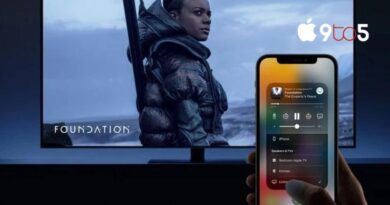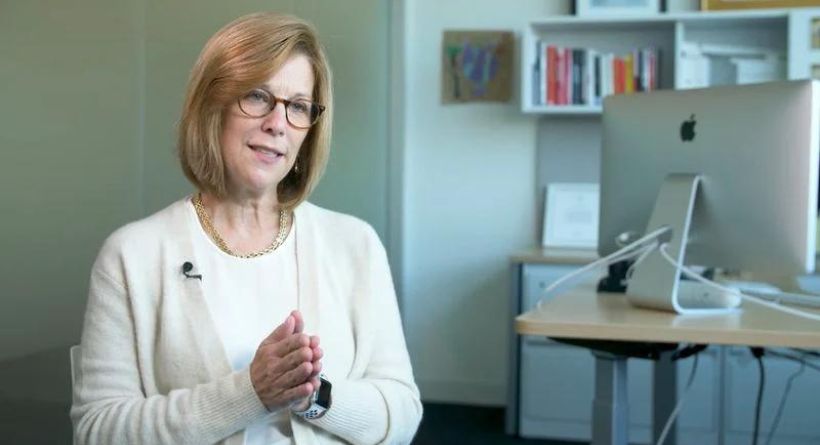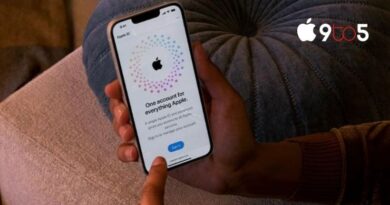Apple’s Car Project: Everything We Know
Around 1,000 auto specialists and engineers have been working on “Project Titan” in a covert site close to Apple’s Cupertino headquarters since the year 2014.
Due to internal conflict and leadership concerns, the Apple Car project has evolved and moved several times over the last few years, although development is still on schedule. Despite speculations in 2016 that Apple had abandoned its ambitions for an automobile, by 2020 the project was back on.
Apple is reportedly going farther than any other automaker to date by developing a completely autonomous self-driving car that won’t need human interaction to operate. Rumors suggest that Apple aims to create a vehicle without a steering wheel and no pedals, which is a very ambitious undertaking.
The Apple Car project is being led by John Giannandrea, Apple’s senior vice president of AI and machine learning, and Kevin Lynch, best known for his work on the Apple Watch, has joined the team. It is believed that these two individuals are largely to blame for Apple’s push toward a self-driving car.
The most sophisticated component Apple has created to date is a powerful processor that is found in the Apple Car. It is constructed of neural processors, which can manage the enormous AI load required for autonomous cars. The processor will likely be produced by TSMC, which also produces semiconductors for the iPhone, iPad, and Mac.
Since Apple lacks expertise in the auto business, it will need partners to build the vehicle. Apple is reportedly attempting to establish relationships in the auto sector. Although the partners Apple will collaborate with are yet unknown, negotiations have taken place with Hyundai and other businesses.
As Apple’s “next star product,” the Apple Car is said to be able to provide “greater integration of hardware, software, and services” than prospective rivals in the automobile industry. The Apple Car will probably be advertised as being “much higher” than a typical electric car or as a “very high-end” model.
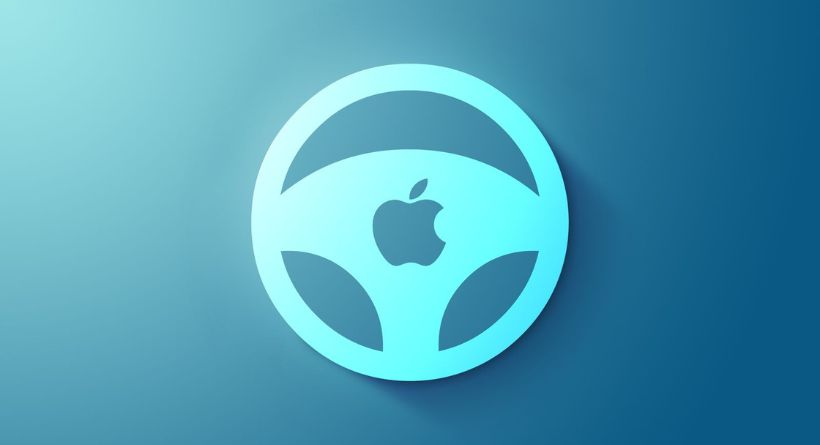
Tim Cook, the CEO of Apple, confirmed the company’s development on autonomous driving software in a rare moment of candour in June 2017. Although Apple doesn’t often discuss its projects, it finds it more difficult to stay silent about the automobile software due to legal requirements.
Using numerous 2015 Lexus RX450h SUVs that were rented from Hertz, Apple has been testing self-driving cars on public highways in California since early 2017. As Apple develops its self-driving software, testing has intensified over time, and the SUVs have been seen on the streets of Cupertino equipped with a variety of sensors and cameras. More than 60 test cars are now on the road with Apple.
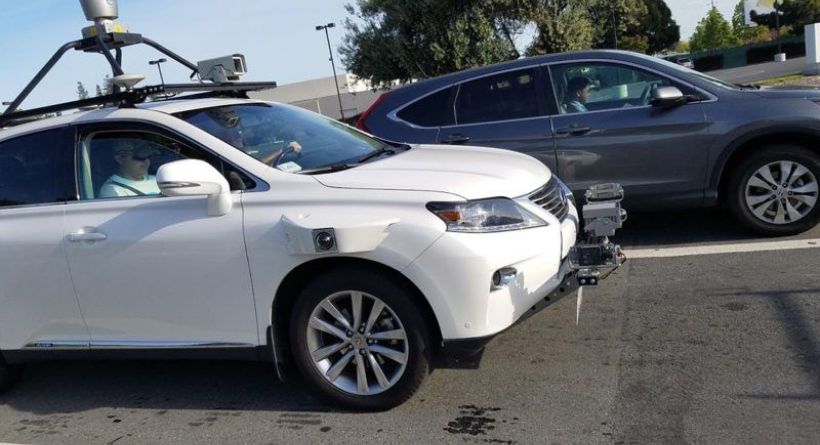
Apple wants to introduce its self-driving vehicle by 2025, but considering how complex the project is, it may miss that deadline or end up being postponed.
An Apple Car won’t be ready to launch for many more years, and during that time, we’ll probably hear a lot more about the project as Apple negotiates contracts with a whole new group of supply chain partners.
Design and Self-Driving Capabilities
In late 2021, Mark Gurman of Bloomberg first reported that Apple had made the decision to completely commit to its automobile project and create a fully autonomous vehicle. Apple is “refocusing” its auto effort on a self-driving car that won’t need a driver at all, a feat that rival automakers like Tesla haven’t yet accomplished.
Apple was driving along two different roads. Apple has chosen to follow the second route under the direction of Kevin Lynch, choosing between a first option with limited self-driving capability and a second option with complete self-driving functionality.
No pedals or steering wheel
Apple intends to create a car with a hands-free driving-focused cabin that does not have a steering wheel or pedals. Bloomberg claims that Apple has spoken about a design that would resemble Canoo’s Lifestyle Vehicle.
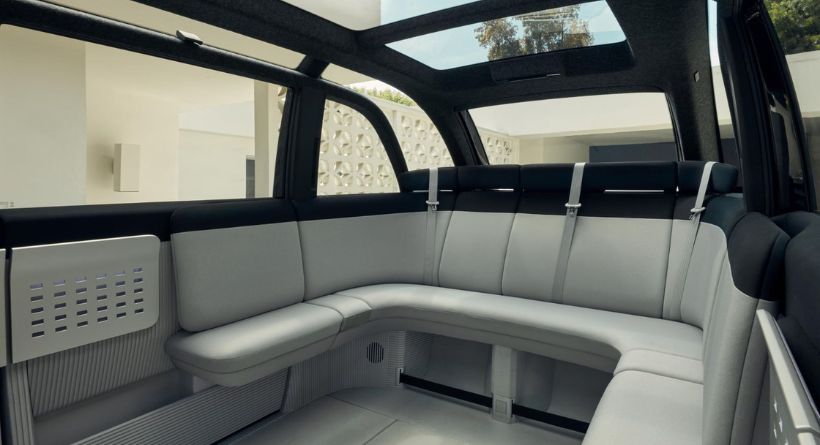
Instead of the traditional front and rear seats, passengers in this automobile sit along the sides of the vehicle. But because it would be handy to have on hand in an emergency, Apple might not be able to get rid of the steering wheel.
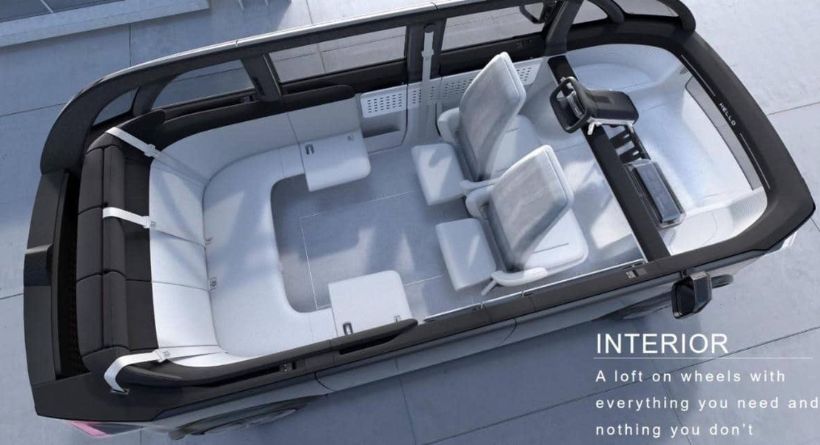
It’s feasible that Apple would exclude them as well. Without a steering wheel, there would be no need for foot pedals to manage acceleration and braking. It’s still unclear if Apple’s ambitious design intentions will succeed, so it may end up looking more like a conventional automobile. Apple is attempting to get exemptions from the US National Highway Traffic Safety Administration in order to release a car without a steering wheel or brake pedal.
Chassis
According to a story from The Information, Apple wants to create a vehicle with an ambitious design that is unlike any other on the market. As a consultant on the project, former Apple design boss Jony Ive thinks the Apple Car team “should push into the quirkiness of the vehicle’s architecture and not attempt to conceal its sensors.”
The vehicle is believed to include four seats that face inward, enabling occupants to converse face-to-face, and a curving ceiling that mimics the Volkswagen Beetle’s roof.
Apple engineers are experimenting with a trunk compartment that rises for simple access and falls back to its original position when not in use. Large, retractable seat-back displays have also been taken into consideration by the designers.
Informational System
Apple has examined models that include a big touch panel in the centre that is reminiscent of the iPad, which is not too unlike from the way Tesla cars are built. The centre panel would be user-interactive and connected with Apple’s existing products and services.
Processor
The silicon engineering team at Apple, which also designed the CPUs for the M1 Macs, iPhones, and other gadgets, is working on a processor for a new automobile. According to Bloomberg, this microprocessor is the most sophisticated internal Apple-designed component.
According to reports, it is constructed of neural processors that can handle the artificial intelligence demands of autonomous driving. The chip wears out, and a complex internal cooling system could be required.
According to an EETimes expert, the chip may be known as the “C1” and be based on the A12 Bionic CPU.
Safety
The Apple Car was built with safety as a top priority. Apple’s engineers are including redundancy and backup systems that will activate to prevent driving system failures in order to make their vehicles safer than those produced by businesses like Tesla or Waymo.
If Apple wants to make the car as safe as possible for drivers, it may not be viable to remove the steering wheel in the end.
Battery and Charging
The Combined Charging System, a protocol for charging electric automobiles, could work with the Apple Car. The CCS is supported by organisations like Tesla, BMW, Ford, General Motors, Kia, Hyundai, and others, and if Apple Car users adopted this standard, they would be able to utilise the existing charging infrastructure.
Apple is working on a new battery architecture that may “radically” lower battery prices and extend the driving range of cars. By eliminating the pouches and modules that carry the battery materials, Apple is developing a “monocell” design that will bulk up the individual battery cells and provide more room within the battery pack. More active material will be possible in a smaller container as a result. The battery technology has been compared to “the first time you saw the iPhone” and has been called “next level.”
Sensors
In order to replace the present LiDAR systems, which are too costly and heavy to be used in mass-produced cars, Apple has undertaken discussions with four vendors of LiDAR sensors that are smaller, more inexpensive, and easier to mass-produce. Apple wants to create a “revolutionary design” that may be used to an autonomous car in the future.
Cost
The Apple Car will probably be advertised as being “much higher” than a typical electric car or as a “very high-end” model.
Possible Partnerships
As of early 2021, several reports claim that Apple has started discussions with reputable automated electronics suppliers for parts for a possibly forthcoming vehicle-related product. Apple is also said to be seeking to set up a manufacturing facility in the United States.
It was claimed that Apple was considering a cooperation with Hyundai for the construction of the Apple Car, with intentions to transfer the Apple Car development to its Kia brand as part of an agreement that may see production take place in the United States, but that hasn’t materialised.
According to rumours, Hyundai Mobis, a member of the Hyundai Group, would be in charge of overseeing the design and manufacture of various Apple Car components, while Hyundai Group subsidiary Kia would provide the Apple Cars’ U.S. production line. Although Apple intended to spend 4 trillion won ($3.6 billion) in Kia Motors, with Kia poised to produce the Apple Car in its U.S. factory in Georgia, officials at Hyundai were reportedly split about the idea of a partnership with Apple.
Apple apparently gave Hyundai-Kia some thought since the partnership would provide access to a well-known carmaker with the capacity to construct cars in North America. Hyundai-Kia was also ready to provide Apple authority over the hardware and software of the Apple Car, with Apple intending to create a full-fledged Apple-branded car rather than a Kia model with Apple software.
Despite all the reports of an Apple/Hyundai/Kia alliance, the negotiations have been put on hold, and Apple has also been talking about its Apple Car ideas with other automakers. Bloomberg claims that despite Hyundai later retracting and revising the remark, Apple was irritated because Hyundai had stated that it was in discussions with Apple.
The conversations between Apple and the two automakers may have been put on hold for the time being, since Hyundai and its Kia subsidiary announced in February 2021 that they are not working together to produce a self-driving electric vehicle. It’s unclear if the discussions will continue, but some Korean media outlets think that the alliance may endure and that Apple may decide to work with Kia.
Apple is also said to have contacted Nissan about a possible alliance, but discussions fell out over the specifications of the Apple Car before reaching the executive level. The two businesses disagreed over the prospect of a cooperation, with Nissan fearing Apple would demote them to the status of a straightforward hardware vendor. Nissan has said that it has no intentions to alter the way it produces automobiles, in contrast to Apple’s demand for complete control over the Apple Car’s software and design. Since then, Nissan has clarified that it is not in discussions with Apple.
The E-GMP electriv vehicle (BEV) platform from Hyundai, which uses up to two motors, a five-link rear suspension, an integrated drive axle, battery cells that can provide range over 500km on a full charge, and can be charged up to 80% within 18 minutes through high-speed charging, may serve as the basis for Apple’s initial vehicle chassis, according to Apple analyst Ming-Chi Kuo. A high-performance vehicle based on E-GMP has a peak speed of 160 mph and can accelerate from 0 to 60 mph in less than 3.5 seconds.

Additionally, Apple may collaborate with GM and the European manufacturer PSA for upcoming models or in other markets. The “close cooperation” between Apple and its manufacturing partners will speed up the development of its cars.
Apple is having trouble finding a suitable current manufacturer to construct its vehicle, according to Mark Gurman of Bloomberg, and automakers are reportedly apprehensive about the effects such a deal might have on their own brands. As a consequence, it’s been rumoured that Apple is researching contract manufacturers like Foxconn, a business partner.
In addition to being the primary iPhone assembler, Foxconn also introduced an electric vehicle chassis and a software platform to assist automakers in bringing models to market more quickly. Magna, a contract manufacturer, is reportedly another option, although Apple might decide to make the car itself.
The Korea Times reports that a deal between Apple and LG Magna e-Powertrain is “extremely close” to being signed. It may be deduced from Apple’s apparent satisfaction with LG Magna e-lower Powertrain’s production capacity that the firm does not aim to build the car on the same massive scale as other big automakers. Instead of becoming a real mass-market car, Apple’s first generation of electric vehicles is apparently considered as a chance to assess the project’s marketability.
If a deal is struck with LG Magna e-Powertrain, the two parties will then jointly decide on the specifics of the Apple car’s manufacture, and a prototype will reportedly be hinted at in early 2024.
Apple and two Chinese businesses that may provide batteries for a potential Apple Car began “early stage conversations” in June 2021. Apple spoke about battery possibilities with CATL and BYD, advocating for the establishment of American manufacturing plants. Talks broke down when CATL and BYD declined to establish teams specifically for Apple and plans in the United States.
Instead, Foxconn and Advanced Lithium Electrochemistry, both based in Taiwan, plan to establish factories in the United States that may end up producing batteries for the Apple Car. It is possible that Apple is planning to collaborate with these companies on batteries that could be made in the country.
A delegation from Apple’s Apple Car division was also sent to South Korea in 2021 to meet with LG, the SK group, and other companies to explore potential commercial collaborations including the Apple Car. For the forthcoming vehicle, Apple is still looking for additional partners to add to its supply chain. Lithium iron phosphate batteries, which Korean vendors manufacture in large quantities, are being sought after by Apple.
In September, it was reported that Apple will visit Toyota as supplier-finding and supplier-security negotiations continue.
In 2020, an Apple parts manager reportedly informed the Japanese auto supplier Sanden that Apple was developing an electric vehicle and sent Sanden drawings for the vehicle as well as components for an air conditioner. With regards to the Apple Car negotiations, Sanden, a business that manufactures air conditioner components for automobiles, did have financial difficulties because of the continuing epidemic.
Last year, Apple personnel travelled to South Korea to meet with suppliers, and it’s been reported that Apple is looking for many mass-production-capable producers of car electrical parts to provide Apple Car components.
According to rumours, Apple is collaborating with a South Korean-based outsourced semiconductor assembly and test business (OSAT) on the chip modules, packaging, or autopilot features of the Apple Car. Apple’s regional offices in South Korea are in charge of the project.
Also seeking to provide parts for the Apple Car are current Apple vendors. While Luxshare is collaborating with the Chinese manufacturer Chery to produce EVs, Foxconn has an EV production division and is developing a software platform for the automotive industry. Although it is unlikely that Apple would collaborate with either business directly on a vehicle, they may play significant roles in the Apple Car supply chain.
It seems that Apple and German automaker Porsche have considered working together on projects. Oliver Blume, the company’s CEO, said in March 2022 that Porsche and Apple had discussed “interesting joint initiatives,” but that it was still too early to make any formal choices about next endeavours. It’s unclear if Blume meant anything exclusive to the Apple Car or something more like to CarPlay.
Apple Car Development History
Apple officials spoke about developing a car before the release of the first iPhone, indicating the company’s interest in a vehicle dating back to that time. Steve Jobs pondered creating an Apple automobile, and reportedly met with the maker of the small, affordable “V-Vehicle” in 2010, but is claimed to have eventually opted against it in 2008 in favour of concentrating on the iPhone’s development.
With the iPhone firmly established as Apple’s most lucrative product, the company has moved on to other areas of research and development, once again considering the prospect of a project involving automobiles. Beginning in 2015, the first information on the Apple Car began to circulate online.
A strange truck rented by Apple was seen cruising Northern Californian neighbourhoods in February 2015. The van featured a camera gear with many cameras connected to it, which raised the possibility that Apple was utilising it to create a rival to Google Street View. More absurd theories included the potential of a self-driving car, but many who saw the vans immediately realised they had drivers. Later, Apple claimed the vans were connected to a mapping effort, but they likely served as the impetus for the finding of Apple’s trade secret on a vehicle.

Days after the vans were originally discovered, a mystery Apple employee claimed in an email to Business Insider that the company was developing a project that would “give Tesla a run for its money.” According to the insider, workers from Tesla were “jumping ship” to work for Apple on a project that was “too intriguing to pass up.”
The Financial Times discovered in mid-February that Apple was hiring professionals in car technology and vehicle design to work in a “top-secret research centre” after multiple media outlets dug deeply into Apple’s strategies. This article emphasised Apple’s attempts to investigate automobile goods and mentioned the company’s employment of Johann Jungwirth, a former Mercedes-Benz Research & Development executive.
Because a full-on automobile project seemed implausible, Financial Times and other media outlets first hypothesised Apple was maybe building a sophisticated software platform to expand upon CarPlay. However, only hours later, The Wall Street Journal dropped a bomb. The website said that Apple was definitely engaged in an electric car project, which it had begun investigating in 2014.
Numerous people at Apple were reportedly working on “Project Titan,” a minivan-like electric car, according to sources cited by The Wall Street Journal. Dan Riccio delegated project management to Steve Zadesky, Apple’s VP of Product Design, who received approval from Apple CEO Tim Cook to hire up to 1,000 people, many of whom were already employed by Apple. Executives from Apple visited with high-end automobile contract manufacturers like Magna Steyr, who Apple may have collaborated with had the car project not changed its emphasis.

There was no clear vision for the car, and executives disagreed even on crucial issues like whether the car should be autonomous or semiautonomous, which caused delays and internal conflict. Apple’s car team investigated a wide range of technologies, including silent motorised doors, car interiors without a steering wheel or gas pedals, augmented reality displays, an improved LIDAR sensor that protrudes less from the top of a car, and spherical wheels.
Due to the internal problems, Steve Zadesky stated in January 2016 that he would be departing the project. This raised concerns about who would take over after him. Former Apple executive Bob Mansfield, who had left the company in 2012, came back to head the team working on electric vehicles in July 2016.
Following an internal “reboot,” Apple fired hundreds of project workers in August and September 2016. Many of them have now joined rival autonomous driving firms. Apple is said to have changed its automobile approach when Mansfield took over as project manager in the summer of 2016.
While initial rumours suggested the company was still developing a car and was continuing to pursue partnerships, later information indicated work on an actual car has stopped for the time being. As a result, Apple changed the project to focus more heavily on the “underlying technology” for autonomous vehicles rather than actually building an automobile.
The California DMV has given Apple permission to test self-driving cars on public roads, and the company’s vehicles, Lexus SUVs fitted with radar and sensor technology, have already been sighted on the road. Additionally, Apple could have bought the Arizona testing facility it has rented in the past.
Apple is also developing a shuttle service to carry staff members between its Silicon Valley offices. In a collaboration with Volkswagen, Apple will put its self-driving software in T6 Transporter vehicles that will be used as staff shuttles.
Reportedly, Apple may have resumed considering the notion of a fully branded car in August 2018. Despite speculations stating that Apple has stopped developing an autonomous car and is instead concentrating on software, reputable Apple analyst Ming-Chi Kuo said that Apple is still working on an Apple Car that would debut between 2023 and 2025.
In January 2019, Apple fired nearly 200 workers, including the Project Titan crew. Bob Mansfield, who had been in charge of the project since 2016, departed in 2020, and John Giannandrea took over. In addition to working on the Apple Watch team, Kevin Lynch also contributes to the Apple Car team.
Along with John Giannandrea and Kevin Lynch, Doug Field, a former Tesla executive who was leading the Apple Car project, left the firm in September. It’s unclear how this would impact Apple Car development, but given that he served as the vice president of special projects, it might be a significant setback. Field is replaced by Lynch, who will oversee Apple Car development.
In June 2019, Apple acquired Drive.ai, a company that created a self-driving shuttle service. For its own self-driving vehicle project, Apple recruited several engineers and product designers from Drive.ai.
Early in 2020, Apple conducted discussions with the manufacturer of electric vehicles Canoo, but those discussions finally stalled. As part of Apple’s attempts to advance its electric car project, Canoo and Apple considered a number of alternatives, including an investment and an acquisition.
Apple was interested in the scalable, modular electric car platform that Canoo has created. Canoo had hoped to get funding from Apple, but negotiations broke down. As a result, Canoo joined with Hennessy Capital Acquisition Corp. IV and raised $300 to help finance the development and manufacture of the Canoo minivan. Canoo intends to produce consumer-oriented vans in addition to business electric cars like delivery vans.
Apple Car Leadership
Throughout its development, the Apple Car project has seen many leadership transitions and hundreds of staff have been let go, but it is now run by John Giannandrea, Apple’s head of AI and machine learning, who took over from Bob Mansfield when Mansfield left in 2020.
In addition to managing Apple Watch development, Kevin Lynch, recognised for his work on the Apple Watch, has joined Apple’s team for autonomous vehicles, so the company’s best engineers are working on the car. Doug Field, a former Tesla executive who departed the business in September 2021, is being replaced by Lynch.
Recruitment initiatives
Although it was reported that Apple intended to have more than 1,000 workers, it initially had a staff of roughly 200 people working on the Apple Car. Apple has been hiring professionals from the auto industry and other auto-related sectors, such as researchers with expertise in battery technology and autonomous systems, since the beginning of 2015.
Apple has poached hundreds of high-profile personnel with knowledge of automobiles and autonomous systems from a variety of automakers over the years and via the revisions to the Apple Car project. While some Apple team members have experience from large corporations like Tesla, Ford, and GM, others have come from smaller corporations including Tesla, Volvo, Karma Automotive, Daimler, General Motors, A123 Systems, MIT Motorsports, Ogin, Autoliv, Concept Systems, General Dynamics, and many more.
High-profile Former Tesla head recruiter Lauren Ciminera, who may be working to find more employees for the car project, former Tesla vice president Chris Porritt, who may have joined Apple to play a crucial role in the development of the Apple Car, and former Tesla mechanical engineering manager David Nelson are among the Tesla employees who were hired by Apple. Prior to joining Tesla, Porritt had positions with firms like Land Rover and Aston Martin, gaining extensive expertise in the European automotive sector.
David Masiukiewicz, a former senior CNC programmer for Tesla, joined Apple in April 2016 to work at the Product Realization Lab. There, he may develop prototypes of components intended for the Apple Car. Kevin Harvey, who formerly worked at Andretti Autosport’s CNC machine shop, is also employed at the lab.
Five workers from A123 Systems, a business that specialises in making batteries for electric cars, are among the other significant recruits. A123 Systems sued Apple over the hired staff members, some of whom had experience with lithium ion batteries used in electric cars. The dispute has now been resolved. One of Apple’s most prominent employees is the former CTO of the business, Mujeeb Ijaz. Ijaz worked as an engineering manager for electric and fuel cell vehicle research and development at Ford before heading a team at A123 Systems.
In addition, Apple has hired one engineer from General Motors, two former Ford engineers, and battery specialists from Samsung. Todd Gray and Aindrea Campbell are two further ex-Ford workers with skill in body work.
Doug Betts, a former senior vice president of the Chrysler Group and worldwide head of operations for the company’s product service and quality, was recruited by Apple in the middle of 2015 after leaving that position. Betts may be a member of the operational group working on Apple’s vehicle initiative.
Apple apparently shut down Mission Motors after hiring several workers from the fledgling electric motorbike business. Six engineers with experience in electric drives were hired by Apple from the firm.
Autonomous vehicle experts have been hired by Apple, including Jamie Carlson, a Tesla Motors engineer who worked on the company’s autonomous vehicle firmware project, Paul Furgale, a researcher who specialises in the field, Jonathan Cohen, a former NVIDIA deep learning director who worked on deep learning for the company’s Drive NX platform, and Jaime Waydo, a former Waymo head of systems engineering.
In addition to Sanjai Massey, a former Ford engineer who worked on connected and autonomous vehicles, Stefan Weber, a former Bosch engineer who worked on driver assistance systems, and Lech Szumilas, a former Delphi research scientist with experience in autonomous vehicles, Apple has also hired Megan McClain, a former Volkswagen engineer, Vinay Palakkode, a graduate researcher at Carnegie Mellon University, Xianqiao Tong, who developed driver assistance systems for NVI
Hal Ockerse, the engineering manager at Tesla Motors, worked on components for driver assistance systems. Subhagato Dutta worked on a team at Texas Instruments that developed automotive algorithms, while Yakshu Madaan was formerly employed at Tata Motors, the biggest automaker in India.
Dan Dodge, who previously oversaw BlackBerry’s automotive software group and created QNX, the software platform used in a variety of in-car entertainment systems, was recruited by Apple in the summer of 2016. Dodge’s experience with automotive software implies that he is a member of the group creating Apple’s autonomous vehicle system.
In a facility in Kanata, Canada, Apple has at least twenty former BlackBerry QNX personnel working on creating an in-car software platform.
Mark Rober, a well-known YouTuber and engineer, spent a short time working on Apple’s special projects team creating VR technology that would be used in self-driving vehicles for both enjoyment and to reduce motion sickness while undertaking tasks like reading in the car.
Rober has worked for Apple for a while and is mentioned in a number of relevant patents. Specifically, autonomous cars that don’t need a human to be driving would utilise VR technology.
Doug Field, who spent five years working for Tesla and handled Model 3 manufacturing, was rehired by Apple in August 2018. Field worked for Apple as the vice president of Mac Hardware Engineering until 2013, when he resigned to join Tesla. In September 2021, Field quit the Apple Car team, and Kevin Lynch took his place.
Steve MacManus, a former executive of Tesla with knowledge of automobile exteriors and interiors, was recruited by Apple in July. Currently employed by Apple as a “Senior Director,” MacManus may be contributing to the company’s auto initiative. Jonathan Sive, a BMW car engineer who previously worked at Tesla and Waymo, as well as Stuart Bowers, a former vice president of Tesla who worked on Tesla’s self-driving technology, joined Apple in 2020.
In 2019, Apple recruited Michael Schwekutsch, a former vice president of Tesla who worked on motors and gearboxes. Later, in late 2021, Schwekutsch departed the business to join a start-up air taxi service. He had been a senior director of engineering for the Apple automobile team’s special projects division. In the same period, Apple also lost three additional recruits, including Stephen Spiteri, manager of hardware engineering, Alex Clarabut, team battery manager, and Eric Rogers, head engineer for radar systems.
Manfred Harrer, a Porsche executive with experience in chassis design, was recruited by Apple in December 2020. Harrer, who oversaw the Cayenne product line after serving as Porsche’s director of chassis development, was regarded as one of the top engineers in the Volkswagen Group.
Business Insider was informed by a former senior Volkswagen management that Mr. Harrer was a “secret champion” and the “measure of all things in his profession.” Harrer had worked for BMW and Audi before joining Porsche to improve their chassis.
Ulrich Kranz, creator of the self-driving vehicle firm, and a former senior executive at BMW, was recruited by Apple in June 2021 for its automobile project. Canoo, a self-driving automobile business that Kranz established and then departed, was founded by him. Before founding Canoo, Kranz worked for 30 years at BMW, where he contributed to the creation of the i3 and i8 automobiles.
Two former Mercedes engineers were recruited by Apple in August 2021 to work on its special projects team’s Apple Car project. One of the new hires has experience in project management, vehicle dynamics, vehicle steering, and mass manufacture of automobiles.
Desi Ujkashevic, a former Ford engineer, joined the Apple Car team in May 2022. Ujkashevic was the Global Director of Ford’s Automotive Safety Engineering Office until he left for Apple. She worked on electric cars and contributed to the creation of the Ford Escape, Explorer, Fiesta, and Focus. Ujkashevic has a plethora of knowledge that will aid the Apple Car project, and she may assist Apple in creating safety measures for electric automobiles.
The car team at Apple had been “dissolved for some time,” according to Apple analyst Ming-Chi Kuo, who stated this in March 2022. According to Kuo, the team needs to be reorganised within the next three to six months if mass production of the car is to start by 2025, which is Apple’s target production date.
Secret Headquarters
According to a number of speculations, Apple personnel are reportedly working on the project in a top-secret site in the Bay Area. Apple’s “vehicle campus” may be in Sunnyvale, California, not far from the company’s main 1 Infinite Loop Campus in Cupertino, according to rumours and conjecture.

Apple is alleged to be running out of a shell firm called SixtyEight Research at the Sunnyvale facility, in addition to formally leasing numerous well-known buildings there. Despite claiming to be a market research company, SixtyEight Research has obtained local approval to build a “car work area” and a “repair garage.” Although it is unknown whether the reports that the automobile project is situated in Sunnyvale are true, previous information indicates that the car’s (or the car software’s) development is certainly occurring at a top-secret site away from the business’s main campus. In the Sunnyvale region, Apple has been buying up a lot of property, including an industrial structure that was once a Pepsi bottling facility.
Greek legendary figures like Zeus, Rhea, and Athena, all of whom are distantly tied to “titans” in Greek mythology, appear in the names of many buildings that may be connected to Apple’s automobile project. These names may be a signal that the structures are connected to “Project Titan.”
building schedules With allusions to automotive words like “lube bay,” “wheel balancer,” “tyre changer,” and “wheel sensor,” Apple’s Sunnyvale facility, code-named “Rhea,” seems to be used for anything car-related, according to documents the firm submitted with municipal authorities.
There are rumours that Apple has a covert car research and development facility in Berlin. According to reports, the factory employs 15 to 20 men and women, all with credentials in engineering, software, hardware, and sales, who work in the German automobile sector. All of the lab employees have been referred to be “advanced thinkers” in their respective disciplines.
Apple leased a sizable manufacturing site in Milpitas, California, in the latter part of 2018. It’s unclear what Apple intends to do with the website, although it could have anything to do with the automobile project.
Apple’s self-driving car initiative places a strong emphasis on safety, and the company published a white paper outlining their vehicle standards. Using simulation and closed-course proving grounds, deployed vehicles are put through “rigorous verification testing,” and the test drivers who operate them must complete a number of training programmes. Additionally, Apple has safety rules in place that mandate the driver take control whenever required and that the vehicle hand control over to the driver in circumstances it is unable to handle.
Auto-Related Domains for Apple
Apple filed three top-level domains (TLDs) for vehicles in December 2015: apple.car, apple.cars, and apple.auto. The three domains could be associated with CarPlay, but it’s also conceivable that Apple has conserved them for usage with an autonomous vehicle or an electric vehicle in the future.
The domains have no content and are not currently being utilized by Apple.
Launch Date
Apple analyst Ming-Chi Kuo predicts that an Apple Car won’t be ready for release until 2025 to 2027 at the earliest, contrary to Reuters’ assertion that the company plans to start producing cars in 2024. Kuo said that he wouldn’t be shocked to see the launch window pushed out to 2028 or later.
Apple is aiming for a 2025 debut, but development on the Apple Car is still in its early phases, according to Bloomberg’s Mark Gurman.


